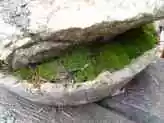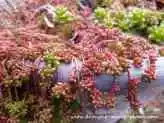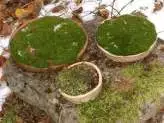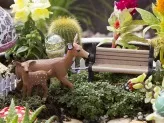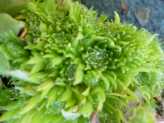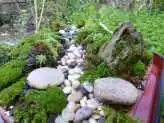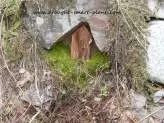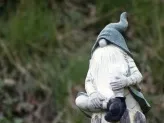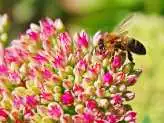Small Scale Ruins
As an Amazon Associate I earn from qualifying purchases.
Other links on this site may lead to other companies that I’m associated with.
What a fun and thoroughly intriguing project; building a miniature succulent garden taken to the next level, this Miniature Castle Garden is a tiny ruin of a medieval castle, complete with an orchard and tiny trees – all Sedum.
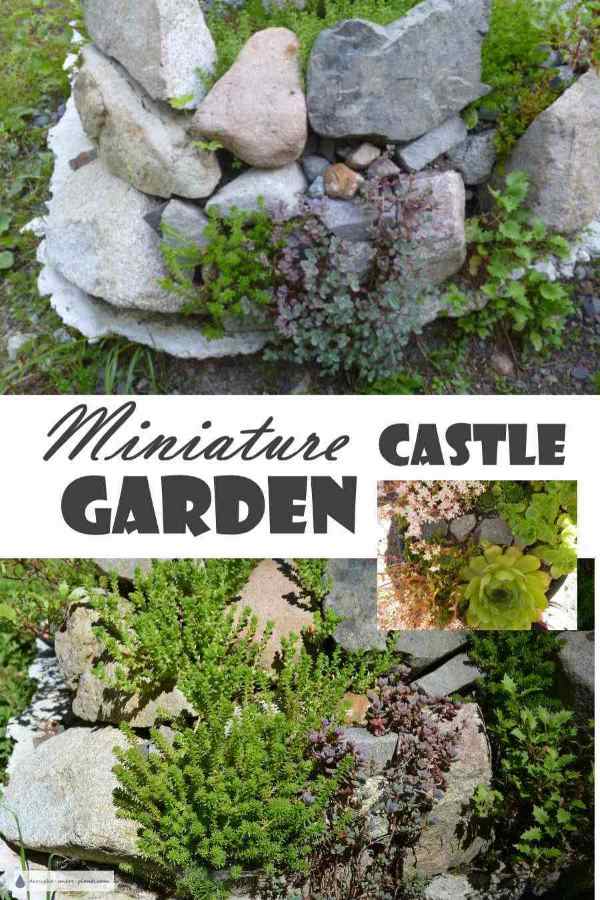
Luckily, a lot of the tiny plants that thrive in terrible conditions also have small enough leaves and tiny branches to be in scale.
The poplar leaved stonecrop, along with several others and the tiniest hens and chicks I can find are tucked into the crannies between the rocks.
When we built our tiny house, there was extra concrete that we used for various things; rustic pavers, a couple of large steps and what was meant to be the top for a metal table – here is the blob of very crudely shaped concrete and the table upside down on it.
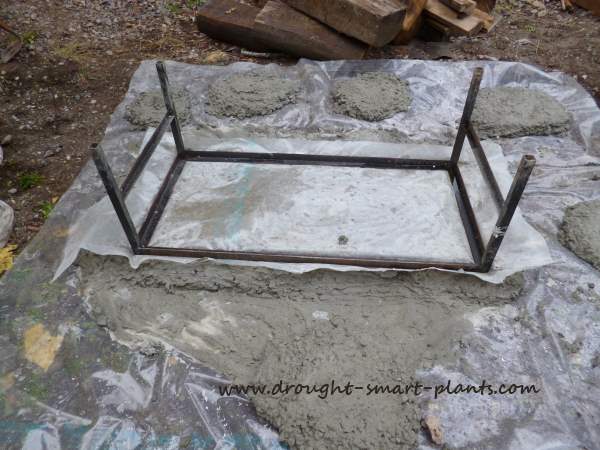
As is often the way, the plans changed when I discovered a much better top for the table (two commercial refrigerator racks) so now I had the huge (and heavy) chunk of concrete.
With brute force, and the use of rollers (pieces of pipe) and fulcrum leverage (pry bars) we moved the beast to the new location.
Initially, I had thought to just plant some tiny succulents on it, and call it good. Then inspiration struck – a ruined castle, with the smallest orchard in the world, and walls cascading with lots of mixed stonecrop and hens and chicks? Why not?
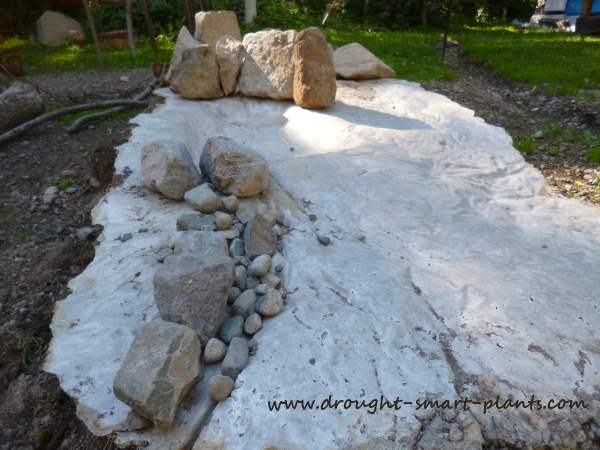
Stacking up the rocks took a while – it’s important to find exactly the right shaped stones to fit into each other.
I always try to get the flat side facing outwards, when building rock walls. This gives it a much cleaner and more finished appearance, and not so muddled.
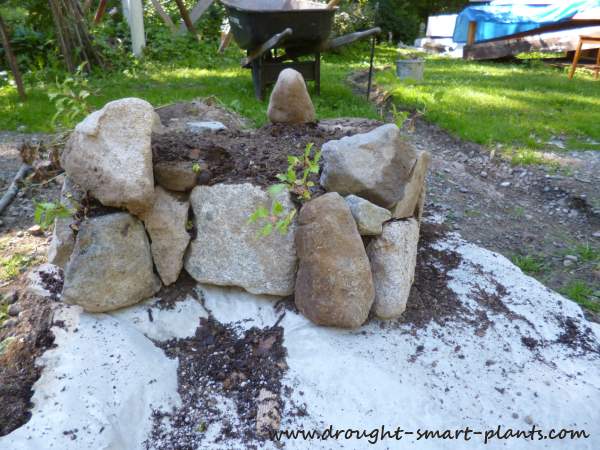
The plants are placed in among the big rocks. They will be just the right scale, with a bit of pruning once in a while. In time, they’ll fill in and cascade down, just as though they were growing on a real (full sized) ruin.
If you ever look closely at how the stones of a ruined castle fall off and are scattered at the base of the wall, that’s what I’ve tried to copy. Smaller stones (those which fell from the roof when it collapsed) are in the center.
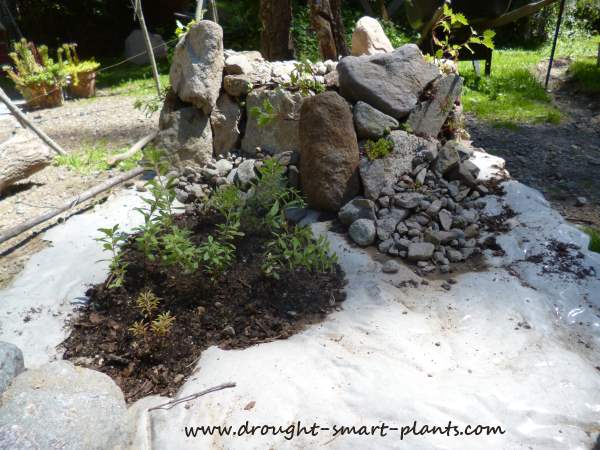
Tiny Sedum ‘trees’ are planted in the orchard, which is in the deeper part of the base, where it was formed over a lump in the ground. These little trees will be pruned over time to look like gnarled apple trees.
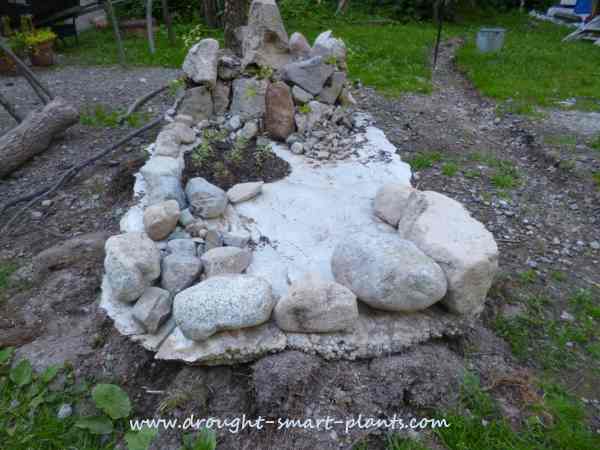
As usual, I don’t know when to quit; another keep is forming in the opposite end…
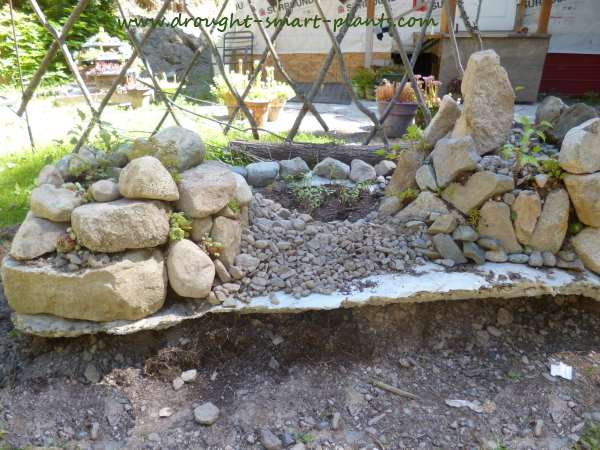
Outlined in large boulders, the castle is protected from invaders. The plants in the thin soil will need tender care, and careful watering to prevent the soil from being washed away. Meanwhile, it’s so enjoyable to view, and dream of days gone by.
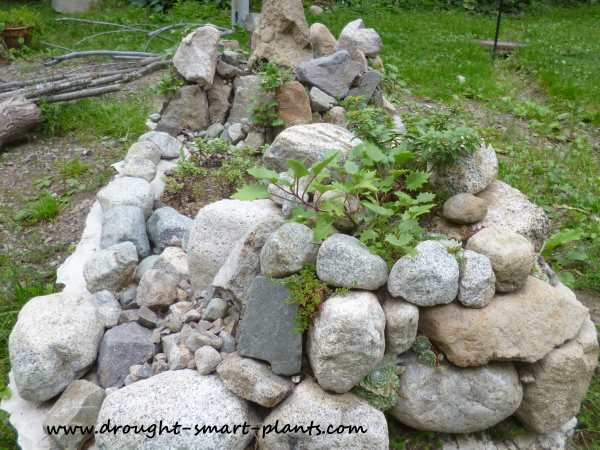
Some of the plants that I’ve used in this little garden are ones that so far there doesn’t seem to be a lot of demand for; these are Sedum middendorffiannum, Sedum populifolium and Sedum selskianum.
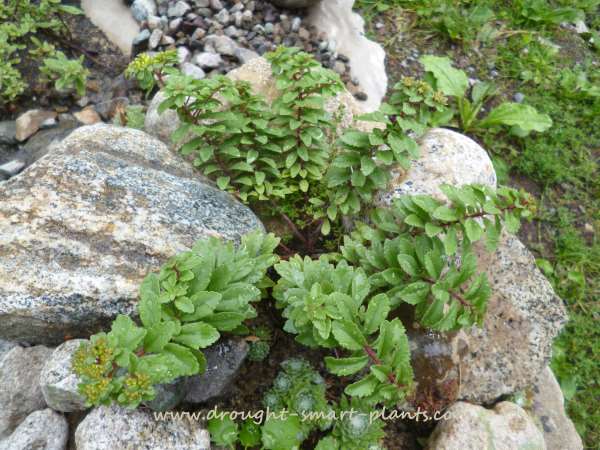
They are all little shrubby types, with their own distinctive characteristics, but they all have one thing in common; they seem to have tree like growth habits, which makes them look like miniature trees, with a woody stem and lots of branches. Even the leaves show tree like form.
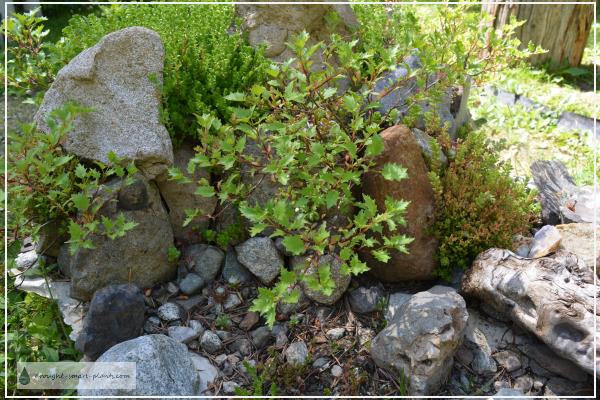
Over time, the plants get rooted well into the rocks, holding them together. The drainage is ‘perfect’ and there’s no chance of any wet feet.
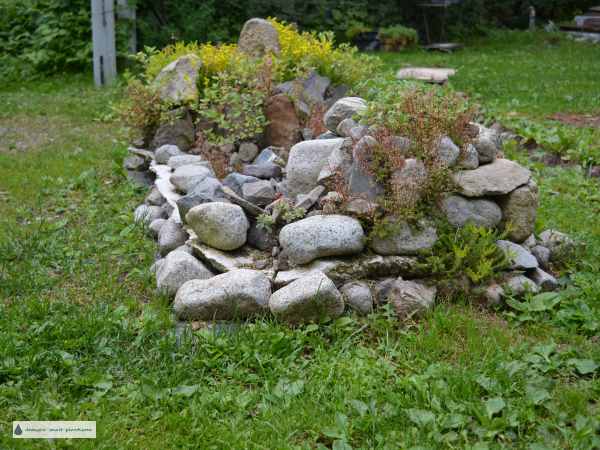
These Fairy Garden accessories would add that really cute touch;

